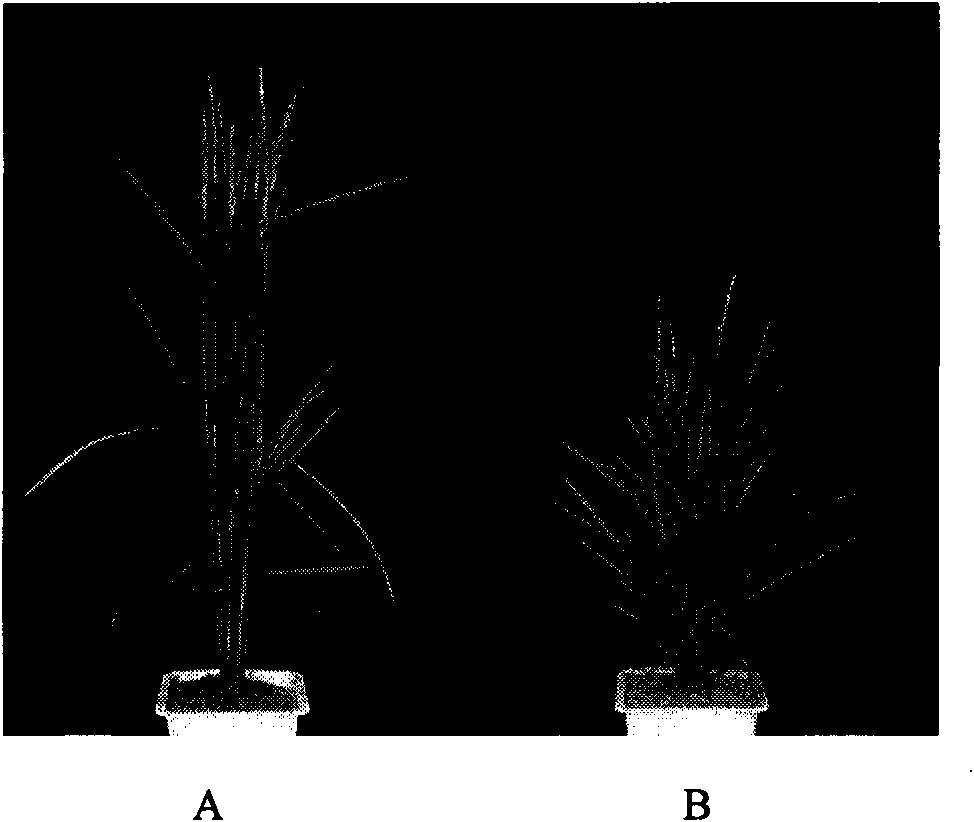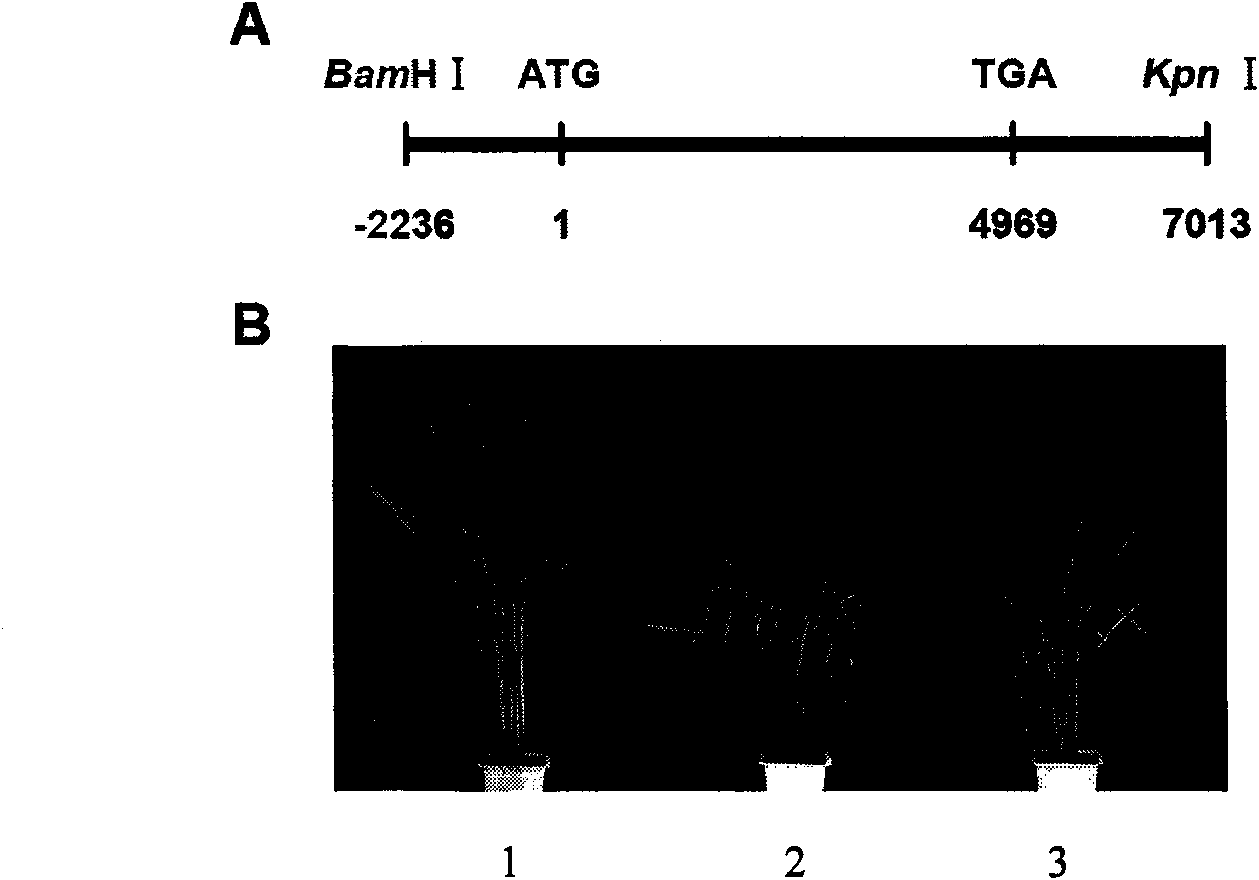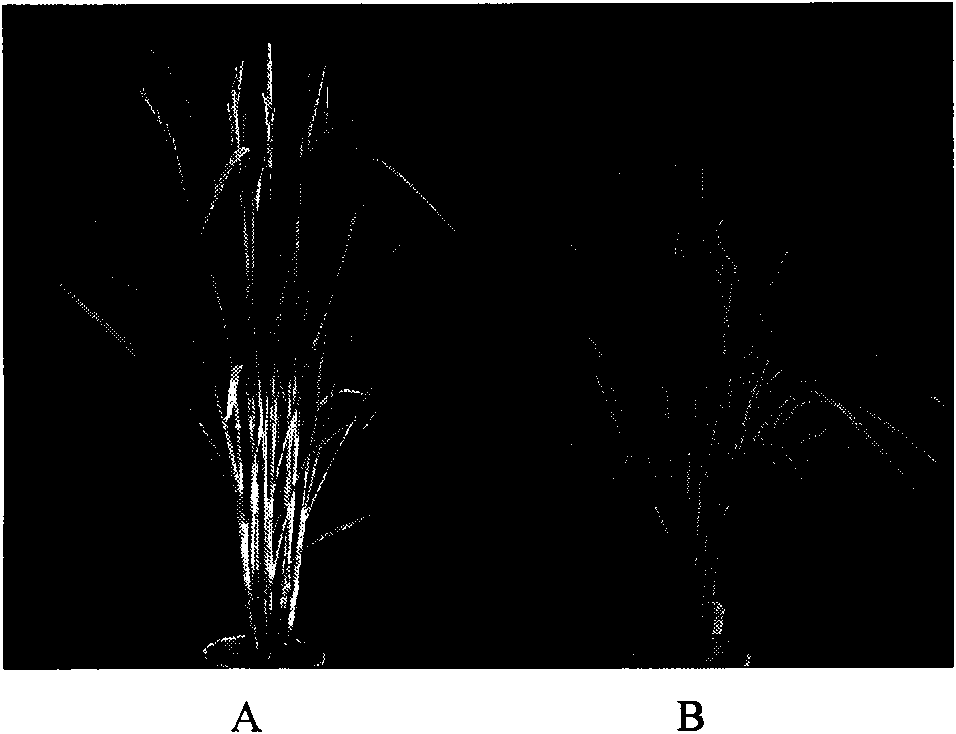Rice tillering associated protein, encoding gene and use thereof
A technology for tiller-related proteins and coding genes, applied in rice tiller-related proteins and their coding genes and applications, to achieve the effect of regulating utilization efficiency
- Summary
- Abstract
- Description
- Claims
- Application Information
AI Technical Summary
Problems solved by technology
Method used
Image
Examples
Embodiment 1
[0048] Embodiment 1, the discovery of protein and its coding gene
[0049] The seeds of the rice (Oryza sativa L.) dwarf multi-tiller mutant dwarf27 (d27) and the wild-type Shiokari were cultivated according to the above-mentioned field cultivation methods, and the seedlings had the following morphology: figure 1 Shown (A represents wild-type Shiokari, B represents dwarf multi-tiller mutant d27). Then the leaves were taken for DNA extraction.
[0050] Extraction of rice genomic DNA:
[0051] Using improved CTAB method (Mou Z, He Y, Dai Y, et al.Deficiency in fatty acidsynthase leads to premature cell death and dramatic alterations in plantmorphology.The Plant Cell.2000,12,405-418.) from rice leaves Extract genomic DNA. Take 100mg of rice leaves, freeze them with liquid nitrogen, grind them into powder in a small mortar with a diameter of 5cm, transfer them to a 1.5ml centrifuge tube to extract DNA, and dissolve the obtained DNA precipitate in 100μl MQ H 2 O middle.
[005...
Embodiment 2
[0062] Embodiment 2, function and application of gene
[0063] 1. Gene preparation
[0064] Extract the mRNA of the wild-type variety Shiokari seedlings, reverse transcribe to obtain cDNA, use primers to perform PCR amplification on D27F / D27R, sequence the product, and obtain the cDNA sequence of the D27 gene in the wild-type variety, and its nucleotide sequence is shown in the sequence table As shown in Sequence 2, the amino acid sequence of the encoded protein is shown in Sequence 4 in the sequence listing.
[0065] Extract the mRNA of d27 mutant seedlings, reverse transcribe to obtain cDNA, use primers to perform PCR amplification on D27F / D27R, sequence the product, and obtain the cDNA sequence of D27 gene in mutant d27, and its nucleotide sequence is as shown in the sequence list 3, the amino acid sequence of the encoded protein is shown in sequence 5 in the sequence listing.
[0066] D27F: 5'-ATGGAGACCACCACGCTTGTGC-3' (SEQ ID NO: 6),
[0067] D27R: 5'-TCAGATGGAGCAATTCA...
PUM
 Login to View More
Login to View More Abstract
Description
Claims
Application Information
 Login to View More
Login to View More - R&D
- Intellectual Property
- Life Sciences
- Materials
- Tech Scout
- Unparalleled Data Quality
- Higher Quality Content
- 60% Fewer Hallucinations
Browse by: Latest US Patents, China's latest patents, Technical Efficacy Thesaurus, Application Domain, Technology Topic, Popular Technical Reports.
© 2025 PatSnap. All rights reserved.Legal|Privacy policy|Modern Slavery Act Transparency Statement|Sitemap|About US| Contact US: help@patsnap.com



